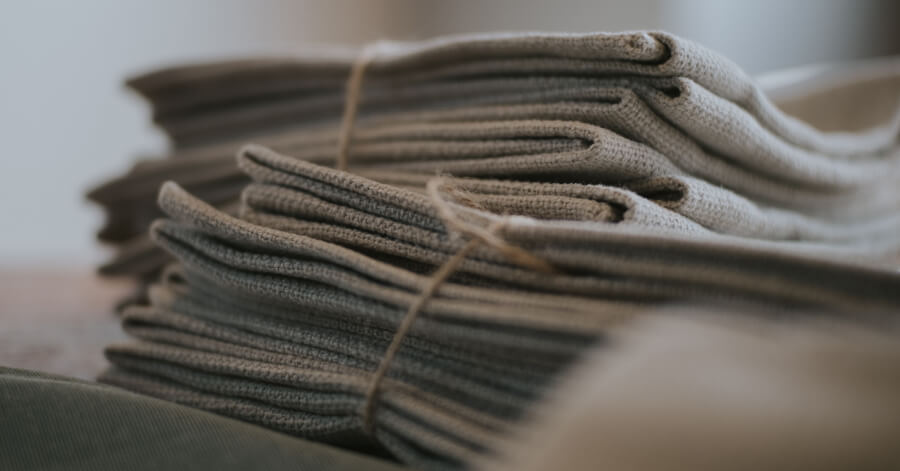Hyundai Motorstudio Senayan Park
Hyundai Motorstudio Senayan Park
Newsroom
-
10 Types of Cool Eco-Friendly Fabrics
- Hyundai Motorstudio Senayan Park 2022.09.21
-
In fact, there are many types of eco-friendly fabrics out there. For ordinary people, maybe environmentally friendly fabrics are still not so familiar. Given, the function is also the same as conventional textiles.
Fabrics such as cotton, jeans, or denim, when disposed of are very difficult to biodegrade. Therefore, in the end, if the clothes are thrown away, it will only increase the amount of cloth waste.
However, for those of you who want to adopt a sustainable lifestyle , the following list of environmentally friendly fabrics is hopefully useful. Let's look at a list of eco-friendly fabrics that you can consider, before shopping for sustainable fashion.
Types of Eco-Friendly Fabrics From Natural Fibers
Everything made from natural materials, will easily decompose and return to nature. The types of cool eco-friendly fabrics that you can try include:
1. Hemp Plant
If you have seen this clump plant, the seeds are usually taken for flour and oil. However, the flax plant is also actually one of the oldest clothing fibers in the world.
Uniquely, hemp fabric will be softer if it is often washed. Therefore, for hundreds of years, the flax plant has been processed as a comfortable clothing fiber . Hemp is also easy to grow without water and without fertilizer. If grown organically, hemp is an eco-friendly fabric.
2. Cotton Plant
The eco-friendly fabric material is cotton. Although it is commonly used, the cotton tree requires a lot of water. Alternatively, cotton can be grown organically, without chemical fertilizers and pesticides. Because it is more environmentally friendly than ordinary cotton.
If the eco-friendly fabric made from cotton is GOTS certified, it means that the cotton plant was grown organically.
3. Linen
Furthermore, the linen plant is very similar to flax. Cultivated for hundreds of years and biodegradable. Plus, linen makes for an eco-friendly fabric that's lightweight, strong and soft, even moth-resistant naturally.
4. Cotton/ Recycled Fabric
If you can't buy eco-friendly fabrics, you can still recycle clothes from cotton. If you buy used clothes or recycle clothes, this means you are helping to reduce fabric waste.
Recycled fabrics like polyester are attractive eco-friendly fabrics. This is because polyester is usually made from plastic bottles. If you wear recycled clothes, you will reduce the plastic waste sent to landfills.
5. Lyocell
Never heard of Lyocell? It is a kind of eco-friendly fabric made from wood pulp. Lyocell fabric is anti-bacterial, odor-free, moisture-resistant and highly absorbent.
Because it is made from natural materials, lyocell is biodegradable and includes environmentally friendly fabrics.
Lyocell does need to be chemically processed to make cellulose fibers. However, the water and chemicals used during the production process are usually recyclable.
6. Econyl
Another example of environmentally friendly fabrics is Econyl. At first glance it looks like nylon fiber because it is made from synthetic waste fibers, including plastic and fishing nets.
This is why, Econyl is more often said to be a kind of recycled nylon. Due to the recycling process, far less waste is generated than conventional nylon fabric production.
Keep in mind, Econyl material is more suitable for products that do not need to be washed often. Examples such as sports shoes, bags, hair ties, and others. It is not recommended to wash Econyl too often because it can cause dissolution of microplastics that end up in the ocean.
7. Piñatex
As the name implies, Piñatex is a type of environmentally friendly fabric made from pineapple or pineapple fiber. Therefore, the production of Piñatex usually cooperates with the food products industry.
Instead of throwing away pineapple skins or leaves in the trash, pineapple waste can be processed into Piñatex cloth. In 2017, Piñatex was produced by Ananas Anam, a Filipino company that works with pineapple farmers.
One drawback that needs to be addressed is that cultivating pineapples consumes a lot of resources. That is why, Piñatex should be produced as a by-product of the pineapple food or beverage industry.
8. Qmonos
Next, the most attractive type of eco-friendly fabric is Qmonos. This sustainable fabric is made from synthetic spider silk developed from microbial and spider genes.
However, you don't need to worry, there are no spiders used in the process, because it is a synthetic fabric. Remarkably, Qmonos fabric has incredible strength, its fibers are five times stronger than steel. So, the texture is light, flexible, and durable.
While Qmonos is a great eco-fabric choice, as it is completely biodegradable, it is worth mentioning that it is expensive and hard to find.
9. Deadstock Fabric
Deadstock fabrics are basically old fabrics that have never been sold by manufacturers. There are many factors, such as damaged, defective, or perhaps being sold as fabric scraps.
Then, why is deadstock fabric an eco-friendly fabric? Because, there is no need for a new manufacturing production process in its manufacture, because the stock has been available for a long time.
So, instead of buying new fabrics that require a manufacturing production process and consume resources like fossil fuels, it's better to buy deadstock fabrics. Some fabric manufacturers deliberately produce more fabric, because they understand that there are a number of consumers who will buy it at a discount.
10. Bamboo
When compared to ordinary polyester or cotton, bamboo is an eco-friendly type of fabric. Bamboo is a plant that is easy to grow in many countries, but unfortunately the manufacture of cloth is sometimes chemically processed.
However, bamboo is still a sustainable fabric as an alternative to conventional fabrics. Read the fabric label about the brand, to make sure you have chosen the best eco-friendly fabric
Well, now you are familiar with various types of sustainable fabrics to perfect your style and fashion. Which do you think suits your style best?




